AI Wisdom, these six biometric technologies are changing our lives!
Under the rapid development of current artificial intelligence technology, as the bio-recognition technology under the branch of its field accelerates the layout, the effective application of various industries is subtly changing our lives.
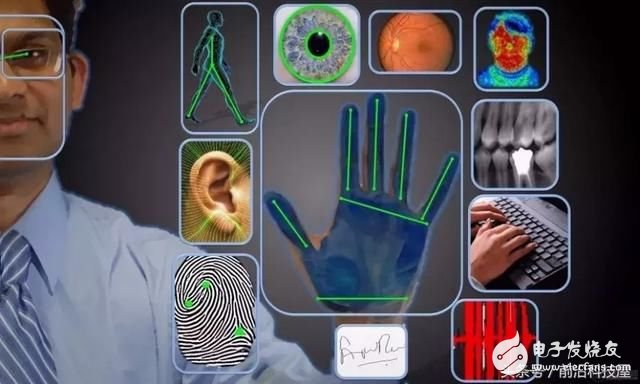
Biometric technology is an intelligent technology that combines the inherent physiological and behavioral characteristics of the human body to identify individual identities through high-tech means such as computer and optical, acoustic, biosensor and biostatistical principles.
Currently, biometric technology is increasingly used. Whether it is a smart phone, financial payment, airport clearance, biometrics are spreading at an alarming rate, upgrading various "unlocked" postures is bringing huge changes to our production and life.
Biometrics in life
At present, there are six kinds of biometric recognition technologies commonly found in our lives, namely fingerprint recognition, voiceprint recognition, retina recognition, iris recognition, and face recognition. The following briefly analyzes the application principles and related advantages of related technologies.
Fingerprint recognition
Fingerprint recognition technology involves image processing, pattern recognition, computer vision, mathematical morphology, wavelet analysis and many other disciplines. Because each person's fingerprint is different, there is a clear difference between the fingers of the same person, so the fingerprint is often used for identification.
Fingerprint recognition technology usually uses the overall characteristics of fingerprints such as striated shapes, triangular points, etc. to classify, and then uses local features such as position and orientation to perform user identification.
Usually, firstly, the "feature point" (minuTIae) is found from the acquired fingerprint image, and then the digital representation of the user's living fingerprint is established according to the characteristics of the feature point - fingerprint feature data (a one-way conversion, which can be converted from the fingerprint image into Feature data but cannot be converted from feature data to a fingerprint image).
Since two different fingerprints do not produce the same feature data, the pattern data of the collected fingerprint image and the fingerprint feature data stored in the database are pattern-matched to calculate their similarity, and finally two The matching result of the fingerprint is used to identify the user identity according to the matching result.
Fingerprint recognition technology is currently the most convenient, reliable, non-invasive and inexpensive biometric technology solution, and market applications have great potential. At the same time, fingerprint recognition technology has the following technical advantages:
Fingerprints are unique features of the human body, and their complexity is sufficient to provide sufficient features for authentication; scanning fingerprints is fast and easy to use; fingerprint acquisition heads can be more compact and less expensive.
Voiceprint recognition
Voiceprint recognition, also known as speaker recognition, is speaker recognition and speaker confirmation. Different voiceprint recognition techniques are used for different tasks and applications. For example, when narrowing the scope of criminal investigation, it may be necessary to identify the technology, and the bank transaction requires confirmation technology. Voiceprint recognition is the conversion of sound signals into electrical signals, which are then recognized by a computer.
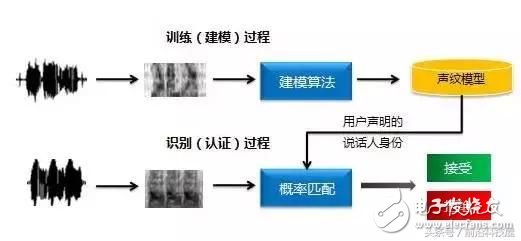
Each person's speech acoustic characteristics are both relatively stable and variability, not absolute and immutable.
This variation can come from physiology, pathology, psychology, simulation, camouflage, and also related to environmental disturbances. However, since each person's vocal organs are different, in general, people can still distinguish the voices of different people or judge whether they are the same person's voice.
Compared to other biometrics, the application of voiceprint recognition has some special advantages:
The voice acquisition with voiceprint features is convenient and natural, and the voiceprint extraction can be completed without knowing it, so the user's acceptance is also high; the recognition of the acquired voice is low, the use is simple, a microphone can be used, and the communication device is used. There is no need for additional recording equipment; for remote identification, only one microphone or phone or mobile phone can be used for remote login via the Internet (communication network or internet); the algorithm for voice recognition and confirmation is low in complexity.
These advantages make the application of voiceprint recognition more and more popular among system developers and users. The world market share of voiceprint recognition is 15.8%, second only to the biometric identification of fingerprints and palm prints, and there is a rising trend.
Retina recognition
The retina is the layer of blood cells at the bottom of the eye. Retinal scanning is a unique feature of low-density infrared light to capture the retina, and the only pattern of blood cells is captured.
The retina is a very small nerve located at the back of the eyeball (1/50 of an inch). It is an important organ that the human eye perceives light and transmits information to the brain through the optic nerve. It is similar to the function of film for biometric recognition. The blood vessels are distributed around the nerve retina, the farthest of the retinal four-layer cells.
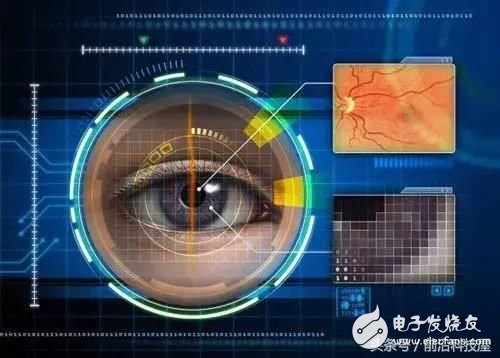
The retina is an extremely fixed biological feature because it is "hidden" and therefore not likely to wear, age or affect the disease. The user does not need to make direct contact with the device, which is one of the most difficult systems to deceive because the retina is invisible and therefore not forged.
Iris recognition
In today's world, iris recognition is still recognized as the most accurate biometric recognition system. Iris recognition technology identifies the identity through the unique features of the human eye iris, and the accuracy of iris feature matching exceeds that of DNA matching.
This technology has been widely recognized in the biometric industry as the current identification, stability, and scalability of identity systems.
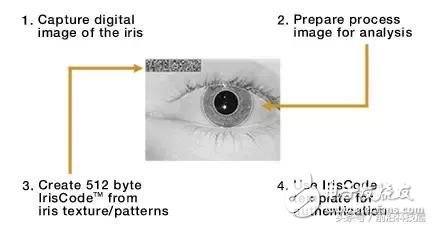
Based on the iris recognition technology, users and managers can set different installation and operation modes according to their own preferences, needs or occasions. For example, in a public place such as a lobby, you can only use the password input method. However, in important occasions, the password is forbidden. Only the iris recognition method is used. Of course, it can also be used in two ways.
Currently, iris recognition technology is widely used in various industries such as coal mines, banks, prisons, access control, social security, and medical care.
Face recognition
A widely used regional feature analysis algorithm in face recognition technology, which combines computer image processing technology and biostatistics principle, uses computer image processing technology to extract portrait feature points from video, and analyzes by using the principle of biostatistics. Create a mathematical model, a face feature template.
Using the established face feature template and the face image of the subject to perform feature analysis, a similar value is given according to the analysis result, and the value can be used to determine whether it is the same person.
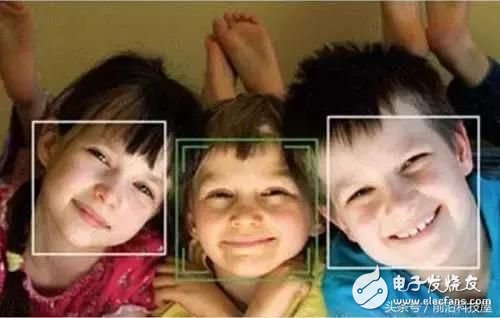
Face recognition is an emerging biometrics technology. Compared with iris recognition, fingerprint scanning, and palm scanning, face recognition technology has unique advantages in application:
Easy to use, high user acceptance The face recognition technology uses a universal camera as the identification information acquisition device to complete the recognition process in a non-contact manner without the recognition object being aware of it.
The recognition accuracy is high, and the speed is faster than other biometric recognition technologies. The recognition accuracy of face recognition technology is at a high level, and the false recognition rate and rejection rate are low. It is not easy to counterfeit in applications with high security requirements. Face recognition technology requires that the recognition object must be in person to identify the scene, and it is difficult for others to copy it.
In a nutshell, face recognition technology is a biometric recognition technology with high precision, easy to use, high stability, difficult to counterfeit, and cost-effective. It has extremely broad market application prospects.
Vein recognition
Vein recognition technology mainly uses the structure of venous blood vessels for identification. Since the vein pattern contains a large amount of characteristic information, it can be used as an object of verification.
The principle of palm vein recognition is also to use venous angiography with different absorption characteristics of specific wavelengths of infrared light between veins and muscles and bones. The principle is the same as palm vein recognition. Since the palm is thick, infrared light is usually not transmitted, so reflection angiography can only be used.
Infrared light is irradiated on the back of the hand, and the part where the vein is absorbed absorbs the infrared light, and the muscle and the bone part reflect strongly, thereby realizing the contrast of the vein.
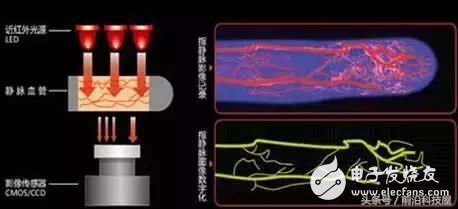
Vein recognition technology is an important part of biometrics technology, and its application has strong advantages:
Vein recognition is a characteristic of inner cattle, it is not worn, it is difficult to forge, and it has high safety. The vascular characteristics are usually more obvious, easy to identify, and the anti-interference is good. It can also achieve non-contact measurement, good hygienic and easy to be Accepted by the user; not susceptible to surface scratches or oil stains.
At present, compared with other biometric technologies, vein recognition technology is less applied, and it is believed that there will be more room for development and prospects in the future development.
Biometrics continues to break through and there are still obstacles
At present, biometrics technology has been relatively mature, especially the face recognition technology and iris recognition technology have made new breakthroughs.
In terms of face recognition, many domestic manufacturers have achieved an accuracy rate of over 99%. In the latest ranking of the international authoritative face recognition database LFW, the domestic face recognition manufacturer Dahua shares reached 99.78%, Tencent and Ping An Technology both achieved 99.8% accuracy, and technological advances are expected to promote the application of biometrics. Further popularization.
In terms of iris recognition, companies in the field of identity recognition solutions for irises have introduced new technologies to verify identity within 60 cm. The technology can be installed in smartphones and mobile devices as well as in automotive, healthcare and other network edge applications.
However, from the perspective of technology and industry application, biometric technology still has some technical problems that need to be overcome. Whether the existing technology bottleneck can be solved is the key to the future development of the biometric industry.
For example, in the current mainstream biometrics technology, fingerprint recognition technology is relatively mature and widely used, but it is easy to be copied; face features are not static, and the process of image acquisition is susceptible to light and other factors; The distance that can be imaged is very narrow. If the user's posture is slightly wrong, it is possible to collect a clear iris. At the same time, the recognition of distance, complex light environment, eyelash occlusion, and shaped pupil also affect the accuracy of iris recognition.
In general, biometrics technology will continue to innovate and break through in the direction of technology and application scenarios, in order to achieve wider application.
Biometric technology trends
With the continuous development and improvement of various biometrics technologies, under the background of global informationization and networking, the application of biometrics technology will become wider and wider, and the depth will continue to deepen, and will present three development trends. .
First of all, biometrics solves a basic identity problem in the daily life of human society. In the future, the results of such identity authentication will be more and more integrated with various industry applications, and information sharing through the network is simple. It is said that the development trend of "identity Internet of Things".
Secondly, various biometrics technologies have their own advantages and their own shortcomings. For some special industry applications with high security requirements, several biometrics technology fusion applications are needed to further improve the overall security of identity recognition. Sex.
Finally, face recognition technology, as one of the latest biometrics technology for large-scale commercial use, has developed rapidly in recent years, in addition to expanding its market share in the traditional application market, in some non-traditional application markets, It will also show the market prospects for good cross-border applications.
As the biometrics industry matures, in the future, biometrics will begin to show the prospect of large-scale application of biometrics in various industries such as government, military, finance, telecommunications, information, manufacturing, and education. Personal applications represented by PCs and mobile phones are also showing great prospects. At the same time, biometrics technology will also bring more convenient and scened applications to people's lives.
With the rapid development of wireless sensing technology, 433 MHz wireless communication devices have been more widely used in portable devices, vehicle-mounted terminals, intelligent locks and other fields [1]. As an important part of wireless communication equipment, antenna is a key component that affects the overall performance of the communication system [2].
Domestic and foreign scholars have been exploring the 433 MHz printed antenna with high gain and miniaturization for many years. However, there are two main trends in the design of 433 MHz printed antenna by previous scholars: one is to sacrifice size to ensure high gain, such as the structural scheme in literature [3]; The other is to sacrifice gain to ensure size miniaturization, such as the scheme in reference [4].
Taking into account the effective size and gain characteristics of the antenna is the difficulty in the design of 433 MHz miniaturized printed antenna. Based on the research experience of domestic and foreign scholars on 433 MHz printed antenna, a 433 MHz miniaturized spiral printed antenna is designed based on the 1/4 wavelength monopole antenna. The simulation results show that the antenna occupies only 20×35 mm2 and the effective gain is -4.14 dB.
433MHZ Rubber Antenna,433Mhz Patch antenna,433MHZ antenna with magnetic base,433MHZ Yagi Antenna
Yetnorson Antenna Co., Ltd. , https://www.yetnorson.com
